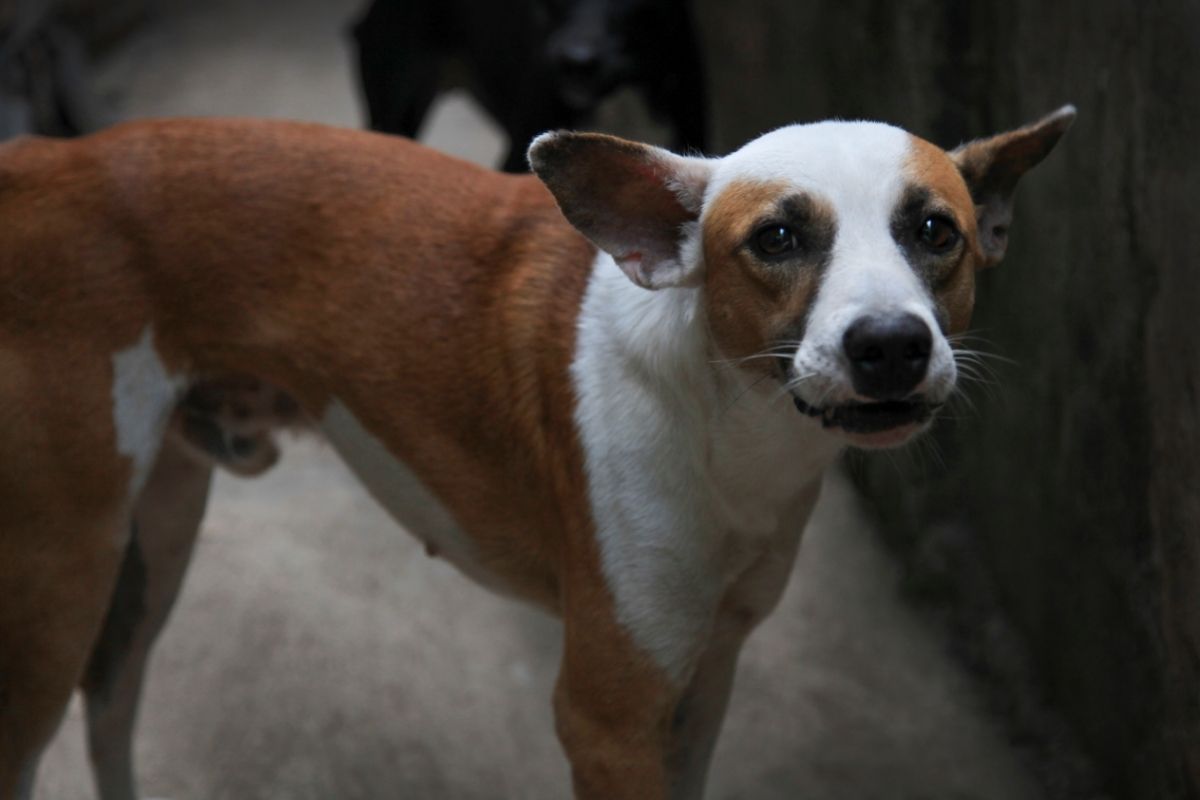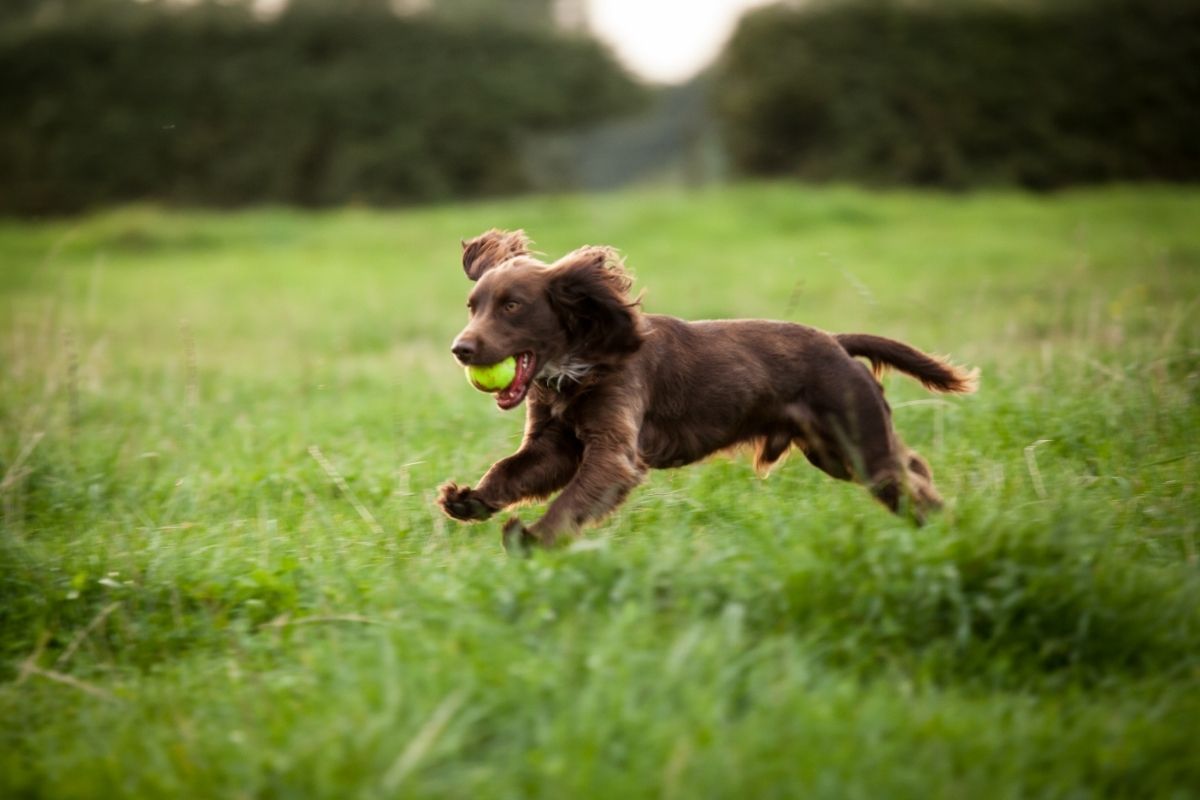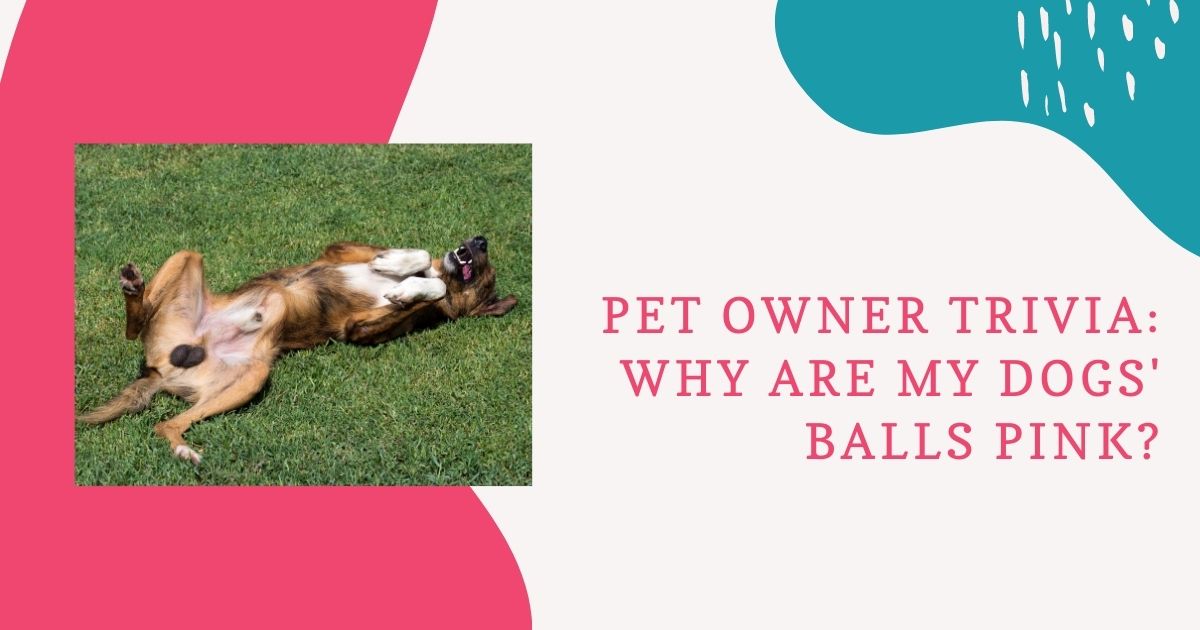Dogs and Pink Balls
Many dog owners get a lot of exposure to their furry friend’s private parts than they would want to. That’s why you will hear some of them asking – why are my dog’s balls pink? Unfortunately, you cannot ignore your dog licking its private parts.
At certain times, you might probably notice there is something wrong. The most common questions you will hear are:
- Why are your dog’s balls red and peeling?
- Why are your dog’s testicles red and raw?
- Why is your dog’s scrotum pink?
- Why are your dog’s balls pink?
All these are concerns that you must address. Fortunately, it is usually not a severe health issue in most cases. For example, a minor irritation can cause your dog’s balls to be red.
However, if you notice changes in your dog’s scrotum appearance, this could be a sign of a medical condition that needs medical attention. This might not be something you wanted to explore, but as a pet parent, your dog’s balls are your concern! So let’s dig in to learn more.

Is a Dog With Big Balls Normal?
What do dog balls look like? If you don’t know how to check whether your dog’s balls are healthy, you might think that a dog with huge balls has swollen balls.
However, certain dog breeds naturally have big balls. However, if you notice that they are not naturally big, please take a closer look or consult your vet.
What Do Healthy Dog Testicles Look Like?
Healthy dog testicles should have two reproductive glands, the testes. A pouch of skin called the scrotum contains the testes. Additionally, the dog scrotum has thin skin, is hairless, and does not have fat.
Suppose you are in places with severe temperatures; the scrotum helps regulate the testes’ temperature by lifting them away from the dog’s tummy. On the other hand, the scrotum contracts when it is cold to keep your furry friend’s testicles close and warm.
The scrotal skin can be irritated or injured like any other skin on the dog’s body. Therefore, you might notice mild inflammation, minor cuts, or rashes on the scrotum. When you see any of these signs, don’t fret.
You can effortlessly treat the irritations or cuts as you would treat them elsewhere. Consider using aloe vera, an antibiotic ointment, or any product that contains hypochlorous acid.
However, suppose your furry friend’s scrotum seems abnormally swollen or discolored, you need to contact your vet. Additionally, if the dog appears to be in pain or has some fever, you should talk to your vet immediately.
Besides that, most dogs’ scrotums are grey regardless of the dog’s skin color on the rest of the body. Others are darker or even black. You might see some pink spots on the scrotum in younger dogs, which is normal.
But, if you see any other unusual symptoms, such as red spots on dog balls, then that is not okay. Contact a veterinarian immediately. Please don’t try to treat the infection yourself.

How Do You Treat a Dog With Swollen Testicles?
Swollen dog testicles are a sign that your dog’s testes are inflamed. What causes inflammation in the dog’s testes? Direct trauma, infections, and viruses can lead to inflamed testes. So how do you treat a dog with a swollen testicle?
Suppose a neutered dog has a swollen scrotum resulting from trauma. However, if you neutered your dog recently, then the swelling on the scrotum could be a result of the neuter surgery.
The swelling could make your furry friend look it has big balls. You may even call your vet to ask them whether they performed the neuter surgery well.
Before you decide the best way to treat swollen dog testicles, it is essential to determine what caused the swelling. Here are some common causes of swollen dog testicles:
Injury
Your dog can hurt his underbelly when running around. The injury might cause the scrotum to appear swollen. Additionally, scratches and punches can open the way for bacteria, fungi, or viruses to infect the scrotum.
If the dog’s balls are inflamed, they will look swollen and red. Severe inflammation of the scrotum is called orchitis. Suppose your dog gets injured; treat it with an antibiotic ointment. If the infection persists for a couple of days, take your dog to the vet.
Brucellosis
If you thought that STIs are exclusive to humans, you thought wrong! Brucellosis is a sexually transmitted infection and is usually challenging to treat. The Brucella canis bacteria cause the condition.
To be fair to your furry friend, he can get this infection by just sniffing the urine of an infected canine. The disease manifests itself in male dogs through an enlarged testicle. Alternatively, you might notice the whole scrotum appears swollen.
Additionally, dogs suffering from brucellosis develop a skin rash on the scrotum. With this, you will see the dog’s balls are red and dry. If you don’t treat this infection, it can cause infertility in your dog. In the long run, the dog testicles will shrivel. chaff
Vets usually prescribe strong antibiotics to treat this infection. Unfortunately, once your dog gets brucellosis, you cannot cure it entirely. He will keep shedding the bacteria occasionally, although it will not have any visible symptoms.
Testicular Torsion
Healthy dog testicles hang loosely in their pouch. This is because many connective tissues that supply blood to the scrotum hold them in place. Testicular torsion is when one or both testicles become twisted on the connective tissue.
External factors such as a blow to the area can cause testicular torsion. Moreover, your canine’s obsession with its balls can cause one or both testicles to rotate, becoming entwined in the connective tissue.
If you have heard a dog parent say, “my dog’s balls are red and irritated,” then that is one of the signs of testicular torsion. Other symptoms include tender scrotal area and lethargy. This condition requires immediate medical attention.
If you don’t treat it in worse-case scenarios, your furry friend’s testicles could die, or the dog can go into septic shock. You can treat it using antibiotics, or your vet might suggest removing any testicle beyond saving.
Epididymis/Orchitis
The epididymis is an inflammation of the testicular tube that stores sperm. On the other hand, orchitis is the inflammation of the testes. The condition can be chronic but acute cases result from trauma to the scrotum and are more prevalent. Read on to find out how to treat epididymitis orchitis in dogs.
Studies have shown that epididymis affects adult dogs primarily. How will you know your furry friend suffers from this condition?
- Swollen testicles.
- It will continually lick the scrotum and have scrotal skin irritation.
- Dog balls are red.
- It could also have pain and fever.
- You will notice that your dog is unwilling to walk and generally lazy.
- You may also find an open wound.
- In some cases, it might refuse to eat.
If you notice your dog exhibiting these symptoms, it would be best to take your furry friend to the vet. The treatment will depend on the vet’s diagnosis. However, if the vet confirms an infection, the most likely remedy is antibiotics.
The antibiotic should be specific to dogs, and you will need a vet to get the right prescription after diagnosis. Besides that, the vet might also prescribe an anti-inflammatory to help reduce the swelling and pain.
You can also use a gauze that you have dipped in cold water to provide your furry friend with temporary relief. Additionally, your vet might recommend an Elizabethan collar to prevent the canine from accessing the testicles and making the situation worse.
It is essential to know how to treat a dog with a swollen testicle as it could lead to undesired consequences. For instance, if your dog has orchitis, the testicle will likely decrease and harden once you manage to control the inflammation.
Once this happens, your furry friend will not be able to produce any sperm. In some instances, the infection usually spreads to a state where it cannot heal. As a result, your vet might recommend testicle removal.
The vet performs testicle removal preemptively for sterilization. This procedure helps curb some behavioral issues and reduces the likelihood of other diseases. On the other hand, this procedure has potential side effects, but the veterinary community generally approves it.
To prevent this condition from developing, it would help to treat wounds promptly. This helps to prevent infections that increase the likelihood of orchitis and epididymitis. Besides that, ensure your dog is in excellent health and visit your vet regularly for progress checks. Read our blog and find out more about Interdigital Furunculosis in Dogs.
Why are My Dog’s Testicles Dry and Flaky?
Why are my dog’s balls peeling? This is a valid concern for many pet owners. So many things could cause your dog’s testicles to peel or change color. Luckily it is not usually something severe, but you should deal with it seriously.
Your dog can have dry skin resulting from weather or diet. Chances are the skin is flaking all over the dog’s body, but you have only noticed the balls peeling. Moreover, dogs usually prefer to lick their balls and might focus on them even if the entire body is itchy.
You can help your furry friend by feeding it with food rich in omega-3 and omega-6 fatty acids. You can also apply Vaseline or coconut oil to his scrotum. Oily substances help resolve dry skin by locking moisture in, and none of them is toxic.
Please don’t use any moisturizer regardless of how good you think it is. These products are not ideal for creatures who love to lick themselves. Therefore, if you apply them to your furry friend, he might lick it and ingest toxic compounds.
Can Dogs Get Blue Balls?
What are blue balls? This is a popular term for a relatively gentle medical condition but has a complicated medical phrase– epididymal hypertension (EH).
EH develops because of increased blood pressure in the seminal canals caused by sexual arousal. By the way, the balls don’t become blue, but they get a bluish shade.
While dogs can get blue balls, it is not the same reason as humans. However, there are two leading causes of this – testicular infection and torsion. This article has covered in detail how you can handle these two conditions.

Being on the Ball!
There you have it! This information has put you on the ball! You now know how to identify healthy dog testicles. Moreover, you also know there are dogs with big balls and how to differentiate that when your dog’s balls are chaffed.
If you are a dog owner, taking this information seriously will help significantly affect your dog’s wellbeing. Finally, don’t treat anything you don’t understand, so always have your vet’s number on speed dial.

